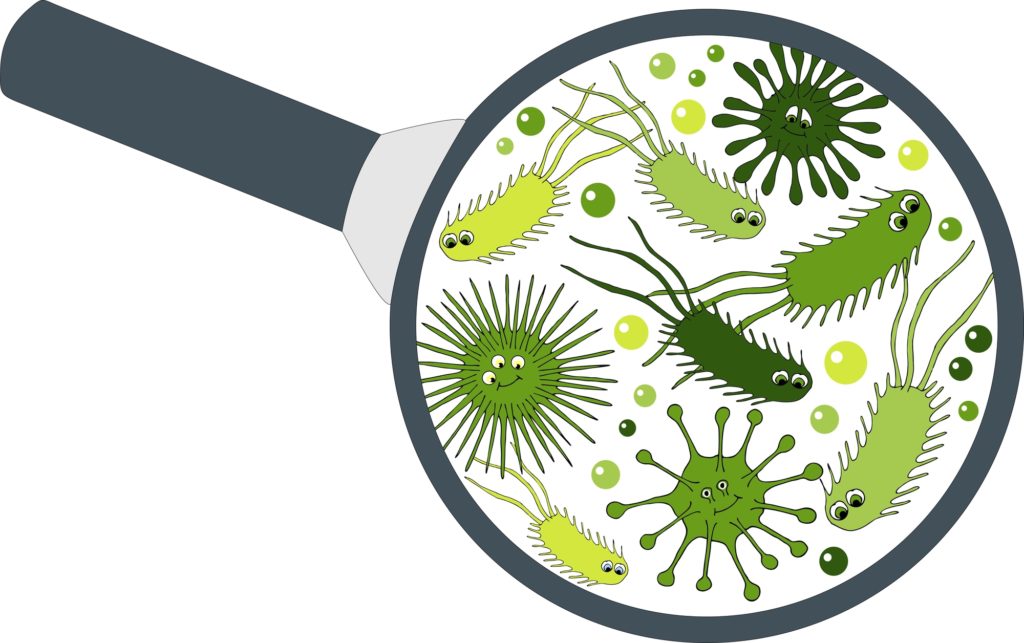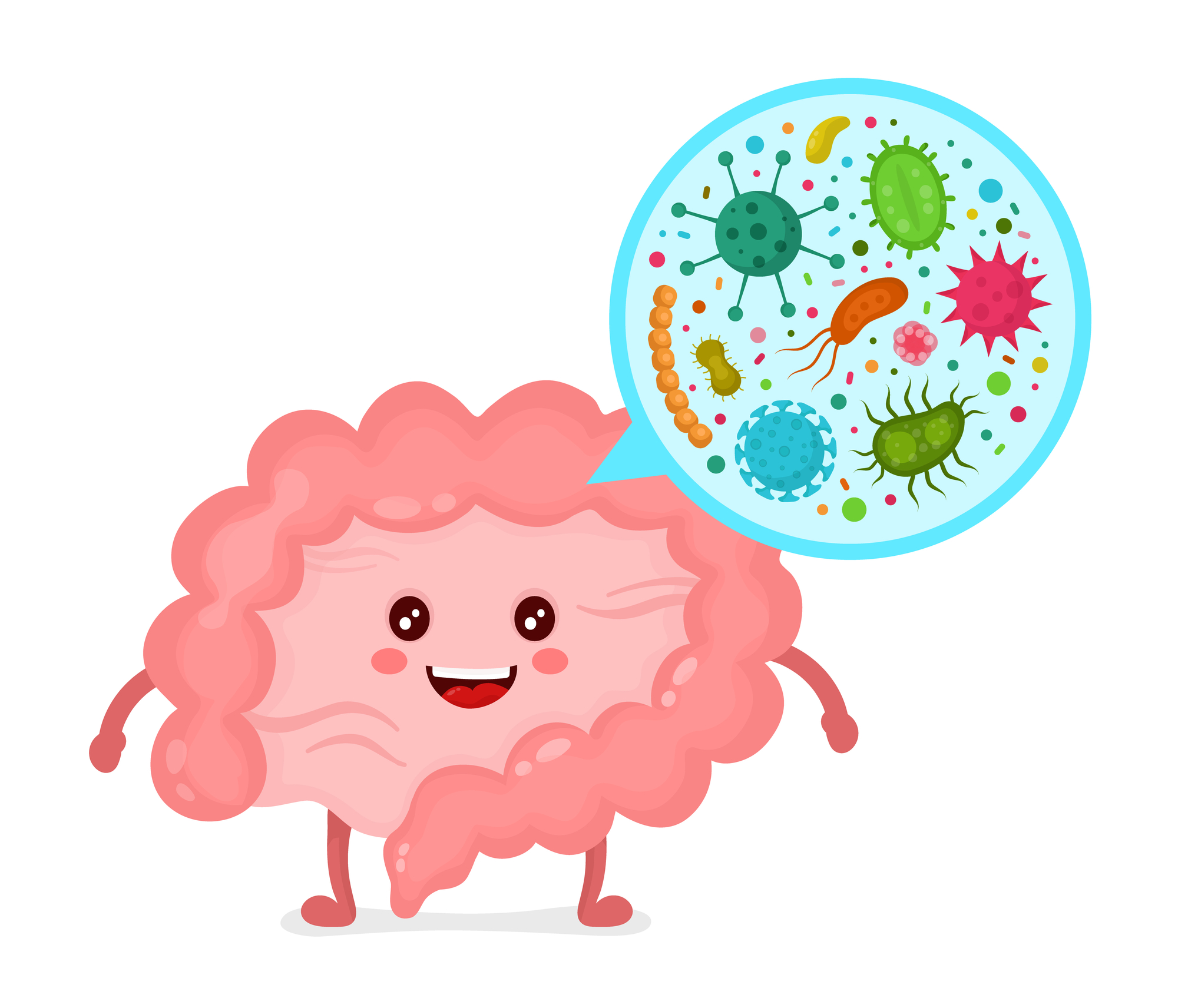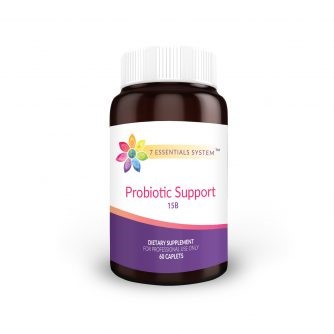
Most of us are all too familiar with how important balancing gut bacteria is on the Healthy Breast path. If you have been on this journey for a while, then you know that there is a direct connection between microorganisms and health. But did you also know that your “microbiome” exists in more places than just your gut? Read on to learn what science is discovering about the bacterial that resides in your whole body as well as specifically in the breast area as well as how the presence of certain microorganisms can directly affect Breast Cancer risk.
What is the Human Microbiome?
First, a little definition (or re-definition) may be in order. Because the “gut microbiome” gets so much airplay these days, a lot of folks are under the impression that microorganisms exist in the digestive tract exclusively. In reality, nothing could be further from the truth!
The Human Genome Project (HGP) was a project of the National Institutes of Health that began in 1990 and ended in 2003. Its purpose was to record, categorize and sequence the genes of all Homo sapiens. All of the genes grouped together created what scientists call a genome. As their research progressed, HGP researchers discovered that the human genome itself contains only about 20,000-25,000 protein-coding genes. That means that only about a fifth of all the protein-coding genes in the human body are actually of strictly human origin.
What about the rest? Most of that important genetic information comes from microbes! Because this discovery was so profound and significant, NIH researchers decided to go a step further and create the Microbiome Project (HMP) in 2007 as an extension of the HGP.
HMP researchers define the human biome as “bacteria, bacteriophage, fungi, protozoa and viruses” that live “inside and on the human body.” In other words, there is a massive network of non-human cellular and genetic information that is non-human in origin which exists throughout your body.
The Good and the Bad of Breast Bacteria

While the “biome” is the entire network of microorganisms in the human body, a microbiome is “a collection of microorganisms and viruses that live in a specific environment in the human body,” according to the NIH.
One important microbiome exists in mammary tissue. In recent years, additional studies have played a vital role in discovering the link between both beneficial and pathogenic bacterium and Breast Cancer.
One study was conducted in 2016 by the Mayo Clinic and published in journal Scientific Reports. The researchers found that breast tissue may contain bacterial DNA even when there was no sign of infection in the area. They also saw different types of bacteria in women with Breast Cancer and women without Breast Cancer.
“Our work confirmed the presence of a distinct breast tissue microbiome and that it is different than the microbiome of the overlying breast skin,” said Dr. Tina Hieken, Mayo Clinic breast surgical oncologist and one of the head authors of the study.
Another related pivotal study has helped to narrow down the specific kinds of bacterial strains that can affect Breast Cancer risk. This investigation was led by Dr. Gregor Reid of the Western University in Ontario, Canada in 2016. Dr. Reid and his team discovered that “microbes in the breast, even in low amounts, may be playing a role in breast cancer—increasing the risk in some cases and decreasing the risk in other cases.”
The study, which was published in the medical journal Applied and Environmental Microbiology, found that women who had the highest levels of Enterobacteriaceae, Staphylococcus and pathogenic strains of Bacillus also had the highest cancer risk.
All of these bacteria are “gram-negative” and are associated with severe disease conditions in general, as well as higher Breast Cancer risk when found in high amounts in breast tissue. Enterobacteriaceae, for example, is associated with respiratory infection. Staphylococcus, or “staph,” is associated with endocardium (a potentially serious heart condition), Toxic Shock Syndrome, and infection deep within the bones and joints. Finally, Bacillus often forms on spoiled food and can be especially prevalent in commercial dairy products. It can produce many kinds of toxins, including B. anthracis, or Anthrax.
On the other hand, high levels of beneficial bacteria such as Lactococcus and certain strains of Streptococcus were present in the breast tissue of women whose Breast Cancer risk was low. Lactococcus is a lactic acid bacteria that is often found in breast milk. Many investigations, including a 2019 study conducted by the National Research Council in Valencia, Spain, support the fact that breast feeding inoculates newborn babies with healthy probiotic bacterium which can help their gut health, and their health in general, as they grow into adulthood.
In addition, Streptococcus has been found to have anti-carcinogenic properties and is considered a powerful antioxidant substance. It has the ability to help prevent DNA damage as a result of oxidation.
What Can You Do To Improve Your Breast Area Microbiome?
If the concept of bacteria living inside your breast still sounds strange, what may sound even more miraculous is how much you really can control the state of that microbiome. Remember that the breast microbiome is connected to your entire “human biome,” so making lifestyle and dietary decisions that support health every day is critical. Here are five important actions you can take right now to begin to balance and heal your breast microbiome and lower your Breast Cancer risk:
#1 Eat a healing diet that does not promote the growth of bad bacteria.
This means swapping out all of those foods which are sugar-heavy as well as simple carbs like pastas and pastries for green leafy veggies and low sugar fruits like green apples and including pure sources of healthy fats and proteins. This blog contains dozens of articles as well as recipes that can help you get started on a healthy bacteria way of eating that lowers inflammation levels in your body overall. Food really is your best medicine, so if you don’t know where to begin on your journey, START HERE!
In addition to eating for health in general, eating fermented foods is a simply “must-do” for improving both your digestive system (where most of your immune system cells reside) and rebalancing your human biome in general.
#2 Lower stress.
This is critical for your healing journey overall and for balancing your breast area microbiota too. That “fight or flight response” is great when you are in danger but leaving it “turned on” 24/7 increases inflammation and creates an environment where pathogenic bacteria can grow.

You CAN learn to lower stress and kick in the relaxation response that will help your body on all levels. Some activities include light exercise, being in nature, enjoying a favorite hobby or enjoying a good, hot soaks with relaxing oils or Epsom salt and meditation/prayer. Be adventurous and try something new to discover what works for you!
#3 Use key specific Healthy Breast essential oils.
While natural health experts has yet to zero in on specific modalities to help balance the breast microenvironment specifically, we know from years of experience as well as scientific research that certain essential oils can absolutely help. Natural health practitioners have long known of the estrogen-balancing power of clary sage. A 2014 Korean study with post-menopausal women found cortisol levels reduced by 35% and thyroid levels balanced as well when clary sage was used in a diffuser inhalant. Other helpful oils include jasmine, sandalwood, geranium, and frankincense.
#4 Find the right probiotic supplement to support your needs.
I suggest the 7 Essentials™ Probiotic Support 15 B formula for those on a Healthy Breast journey. This unique formula contains over a half dozen different beneficial probiotic strains in a dairy-free, high dose (15 billion organisms) formula. What’s more, it is time-released. This means that the beneficial bacteria will be released over a 10 to 12 hour period and will cover the entire gastro-intestinal tract.
So now you know that the gut is not the only place that microorganisms exist. Take care of these delicate environments that exist throughout your body as well as in breast tissue and experience vibrant, cancer-free, balanced energy living!
Dr. Veronique Desaulniers, better known as Dr. V, is the founder of The 7 Essentials System ™, a step-by-step guide that teaches you exactly how to prevent and heal Breast Cancer Naturally. To get your F.R.E.E. 7-day mini e-course, and to receive her weekly action steps and inspiring articles on the power of Natural Medicine, visit https://breastcancerconqueror.com